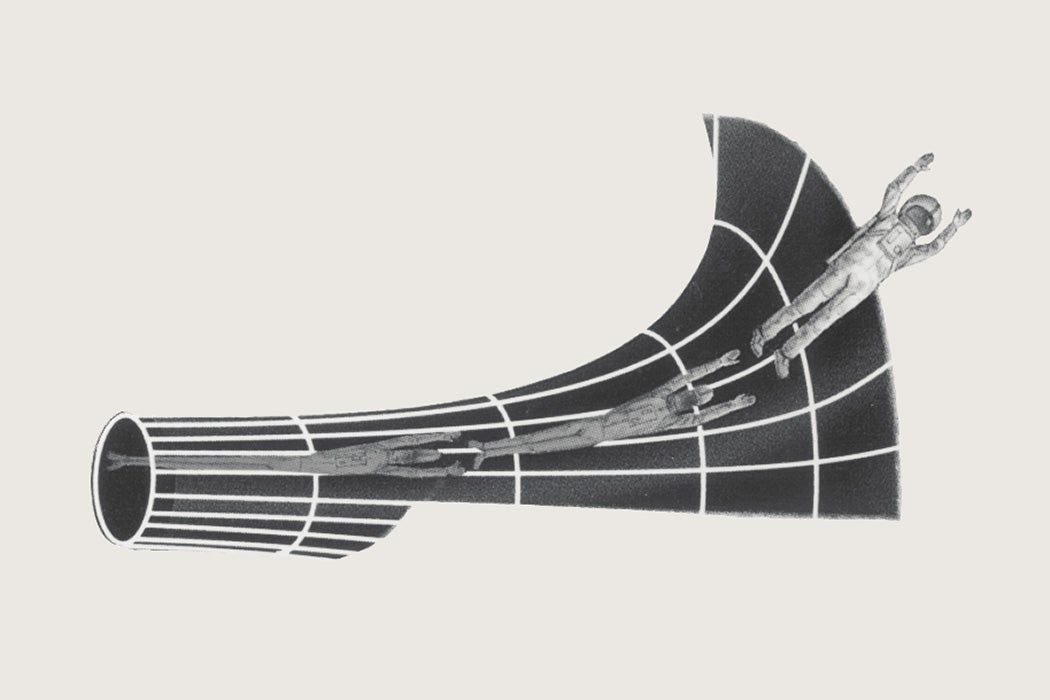In all of the Universe, there is nothing quite so mind-bending as a black hole. Black holes are usually the corpses of long-dead stars—ones that lived and died in a blinding flash called a supernova. This cataclysmic explosion crushes the core to densities billions of times greater than any substance found on Earth.
The result is a stellar corpse with a mass typically between five and fifty times that of the Sun, with all of the mass crushed to a volume smaller than an atom. What then emerges is a strong gravitational field—so strong that, close to the tiny mass, not even light can escape.
The area around the crushed star from which light cannot escape is called the event horizon. For the simplest black hole, the event horizon is a sphere with a radius called the Schwarzschild radius, named after the German physicist Karl Schwarzschild, who first calculated it. For a black hole with the mass of the Sun, the Schwarzschild radius is about 3 kilometers (1.9 miles). In comparison, the radius of the Sun is about 700,000 km.
Much has been written about what happens to someone who falls into the event horizon of a black hole, but what is less known is the claim that as you fall into a black hole, you will be ripped apart by the gravitational force of the hole in a process called “spaghettification.” If you fall feet-first into a black hole, your feet will be pulled harder than your head, resulting in you being stretched out like a long piece of spaghetti.
So, is spaghettification real? Will any object get stretched as it falls into a black hole?
Spaghettification
Here’s where things get interesting. Yes, spaghettification is real—but several parameters determine whether it will happen in any specific situation. For example, a very small object will not experience spaghettification. This is because the force that pulls apart any object isn’t the gravity itself—it’s the difference in the gravitational force between the ends of the object. For a human, that would be the feet and the head. The name of this kind of force is called a tidal force: It’s the same phenomenon that gives Earth its twice-daily tides, as the force of gravity from the Sun on one side of the Earth differs from the other.
The tidal force between the ends of the object depends on the length of the object (L), the mass of the body creating the gravitational field (M), and the distance between them cubed (R3). (For the mathematically savvy, a = 2GML/R3, where G is the gravitational constant and a is the acceleration.)
From this, we see that the mass of the gravitating body is important, but even more important is the distance between it and the object being subjected to tidal forces. Here are some numbers that can help make sense of it all. On the surface of the Earth, the difference in gravity between the head and the feet of a six-foot-tall man is about 0.00007 percent the force of gravity itself. So, it’s no surprise at all that we don’t perceive differences in gravity as we stand up.
In contrast, for a black hole with the mass of our Sun, the head and feet of that same man located about 100 kilometers above the hole would experience a difference in gravity about six million times the force of gravity on Earth—a force difference that would definitely pull a person apart.
This raises another point: Not all materials are equally strong. For example, a steel cable is much stronger than the human body, so it can withstand tidal forces much more easily than a human.
If we want to calculate how far away a person would need to be from a solar-mass black hole and not die, we need to know the force at which a human body fails. As it happens, nineteenth-century military manuals give numbers for the correct way to hang a human. Too little force and the hanging will not break the neck of the condemned; too much and the force will decapitate them. Very roughly, a force of about 2,000 pounds (9,000 Newtons) will pull a human apart. From this, we can calculate the closest safe distance a human can get to a solar-mass black hole: about 700 km (440 miles). And, of course, the tidal force would hurt for much larger distances.
We have seen that falling into a solar-mass black hole would be deadly. Long before you approached the event horizon, you would be painfully disassembled. But what about falling into a supermassive black hole?
Bigger is Less Dangerous
Supermassive black holes can be found at the center of nearly every galaxy. These cosmic leviathans have masses that are millions or even billions of times more than our Sun. Surely, with such huge masses, the effect will be much stronger, right?
Weekly Newsletter
Let’s see what happens regarding the black hole at the center of our Milky Way galaxy. It has a mass of about 4.3 million solar masses. The Schwarzschild radius for this black hole is about 12 million kilometers. So, for a person at the Schwarzschild radius of this huge black hole, the gravity difference between head and feet is about 0.02 percent—barely noticeable.
This demonstrates a very surprising point: At least as far as spaghettification is concerned, larger black holes are less dangerous than small ones. For a supermassive black hole, you could fall through the event horizon past the point of no return without feeling even a twinge. In contrast, for a small black hole, you will be ripped apart long before you ever get close to the event horizon.
The final message is that falling into a black hole is a bad thing to do no matter what. But, if you must, pick a big one.
Support JSTOR Daily! Join our membership program on Patreon today.







